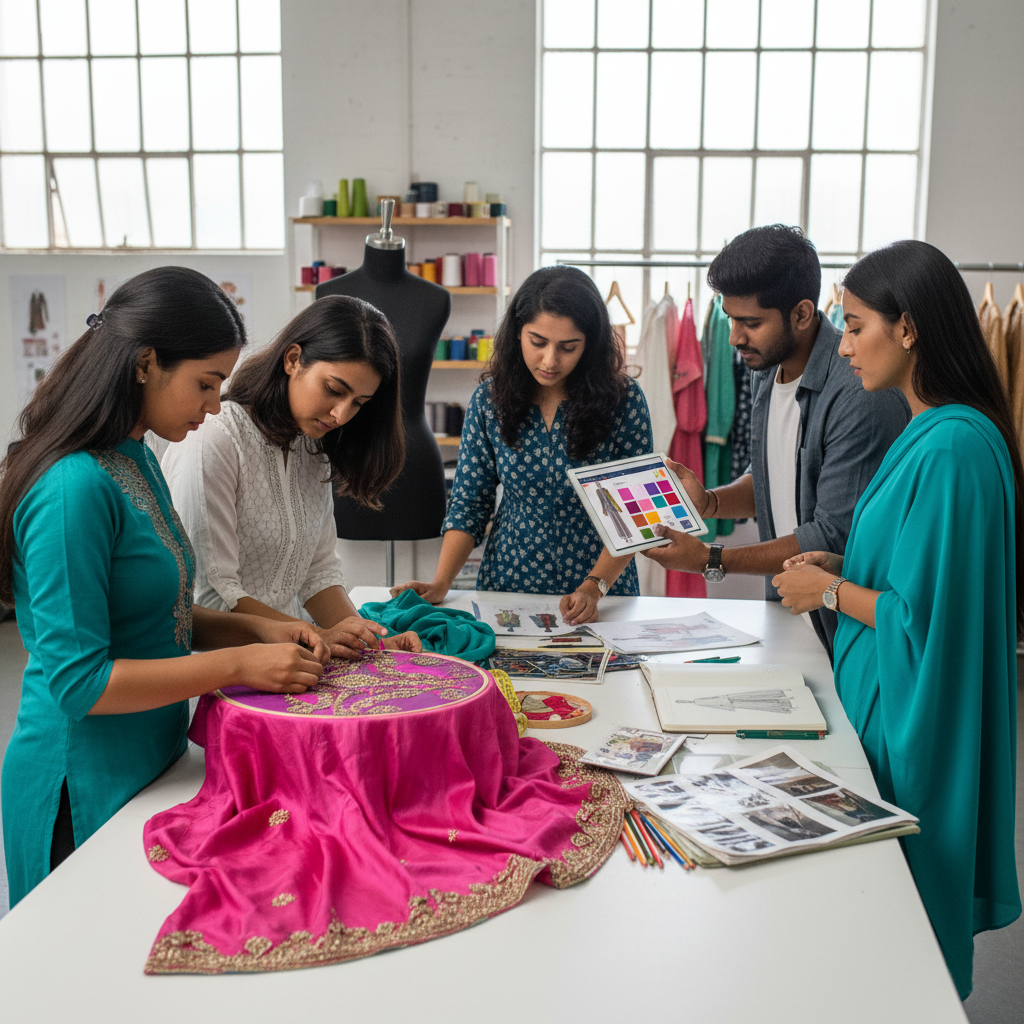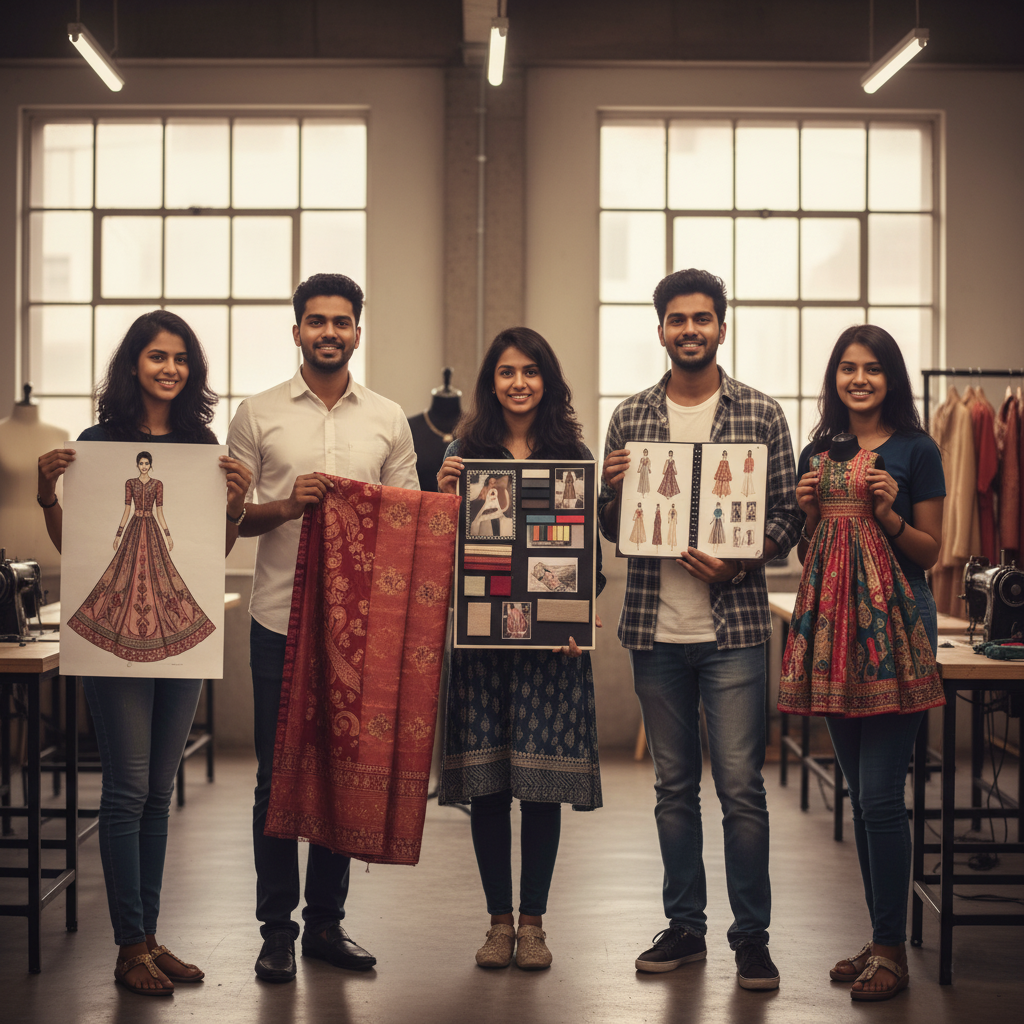In the past, fashion designers had a tough time finding work. Today, there are more opportunities than ever before! Fashion is all about showing off who you are, and it’s different depending on where you live, what time period it is, and even the weather! It’s not just about clothes either. Shoes, jewelry, makeup, hairstyles – all that stuff is part of fashion too. The Best Fashion Designing Colleges in Kolkata ensures that designers can get the benefits out of their talents and developed skill in today’s time. Fashion reflects our culture and can even influence society. Now, with fancy computers, designers can create clothes that are exactly what you want, made from special materials. Let’s take a trip through time and see how fashion design has changed!

Evolution of Fashion Designing:
Fashion has been around for ages, and it’s always changing! Back in the 1700s, men and women wore different clothes, and the styles varied depending on where you lived and what people saw in nature. Clothes weren’t just for keeping warm, they also helped people show off their culture and way of life. Even things like jewelry and hairstyles were part of the fashion scene.
The very first fashion designer we know of is Charles Frederick Worth, who opened a fancy fashion house in Paris way back in 1826. Fashion Design Courses often start by teaching students about this history of clothing.
Here’s the interesting part: Even though the content mentions architecture colleges, learning about fashion design history can be valuable for anyone! It shows how fashion reflects the times and how creative people can be in expressing themselves through clothing and accessories.
Roman Era:
Back then, what you wore showed how much money you had. Rich people, called aristocrats, got to wear fancy, expensive clothes. Poor folks couldn’t afford those nice things, so there was a big difference in how everyone dressed. Women wore long dresses called stolas, kind of like what we wear today, and men wore big draped sheets called togas.
Ancient Egypt:
Ancient Egyptians loved their jewelry! They believed they could use it in the afterlife, so they often buried it with them in their tombs. This tells us that Egyptians wore jewelry and used different colors in their clothes to show how important they were. Because it was so hot in Egypt, they liked to wear clothes made of linen, a cool and light fabric. Women wore long, pleated dresses, while men wore kilts.
Middle Ages:
In the Middle Ages, clothes were like a big sign saying how wealthy you were. Rich people wore fancy wool clothes, and the better the material, brighter colors, and longer jackets you had, the richer you looked. Rich men wore a whole outfit: a jacket, a skirt or a pleated tunic (kind of like a long shirt), and even a long coat on top. Women wore amazing dresses with all sorts of decorations, like butterflies and hearts, on their headpieces. Since kings and queens were the richest people around, they set the trends for everyone else. Even your hat mattered back then – the fancier it was, the higher your social rank!
Beginning of the 20th Century:
Fashion got a big shakeup around the 1900s! Paris became the center of fashion, and a new style called “haute couture” became popular. This meant clothes were one-of-a-kind, made especially for rich people. Designers would draw up patterns exactly how the customer wanted, kind of like getting a custom-made suit today. Then, in the mid-1900s, things changed again. Factories started making clothes in large quantities, so more people could afford new styles and trends. This meant people could finally choose clothes they liked and felt comfortable in, instead of just wearing what the rich people wore.
Fashion design today:
There are more fashion design jobs than ever before! IIFD the Top Fashion Design College in Kolkata or other universities in India come with the Fashion Courses that actually give value to the students to start their career in this field. These days, designers can create all sorts of things, not just clothes. Swimsuits, wedding dresses, clothes for men, shoes, purses – you name it! They can work in factories that make clothes for lots of people, or even help create new career paths in fashion, like stylists, makeup artists, or fashion photographers.



